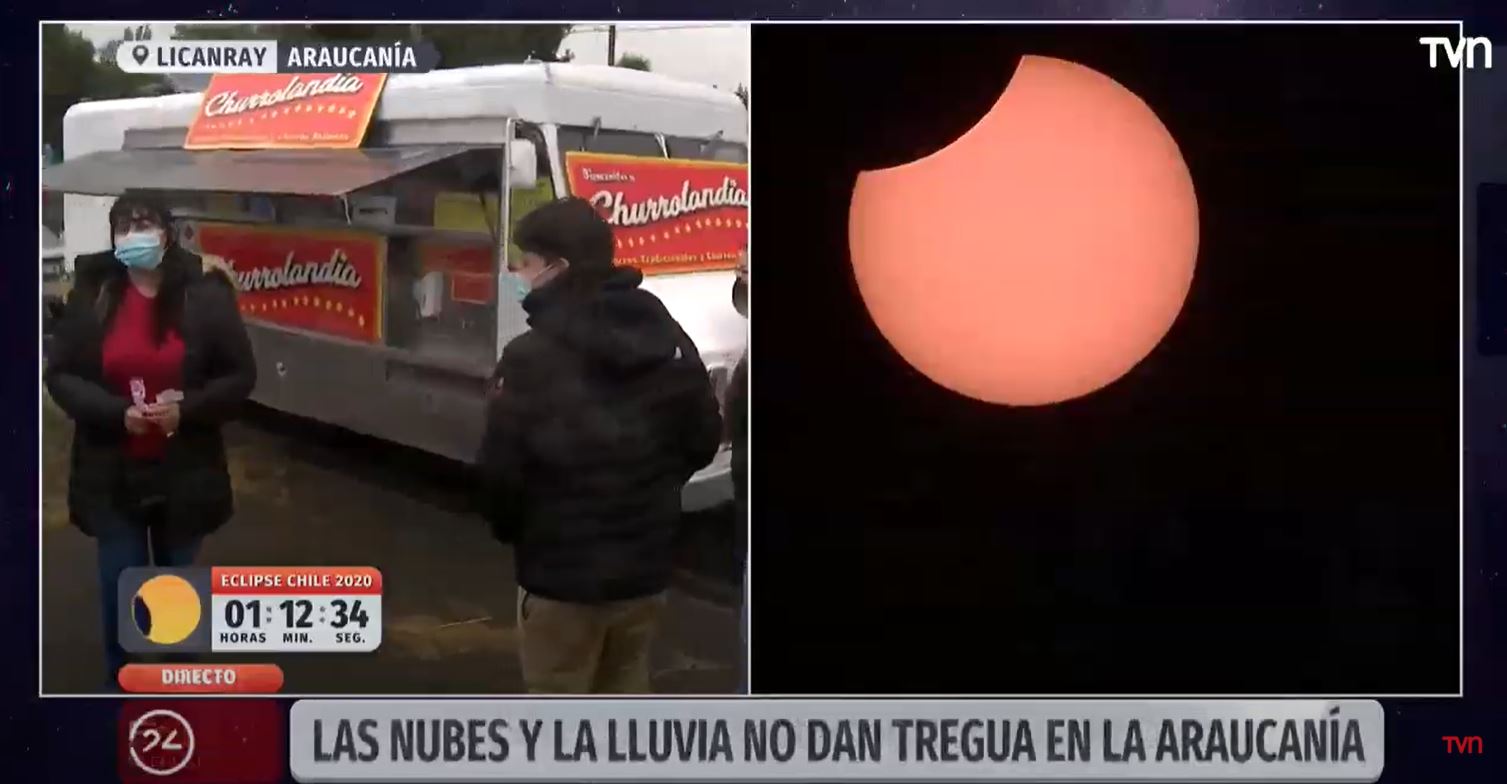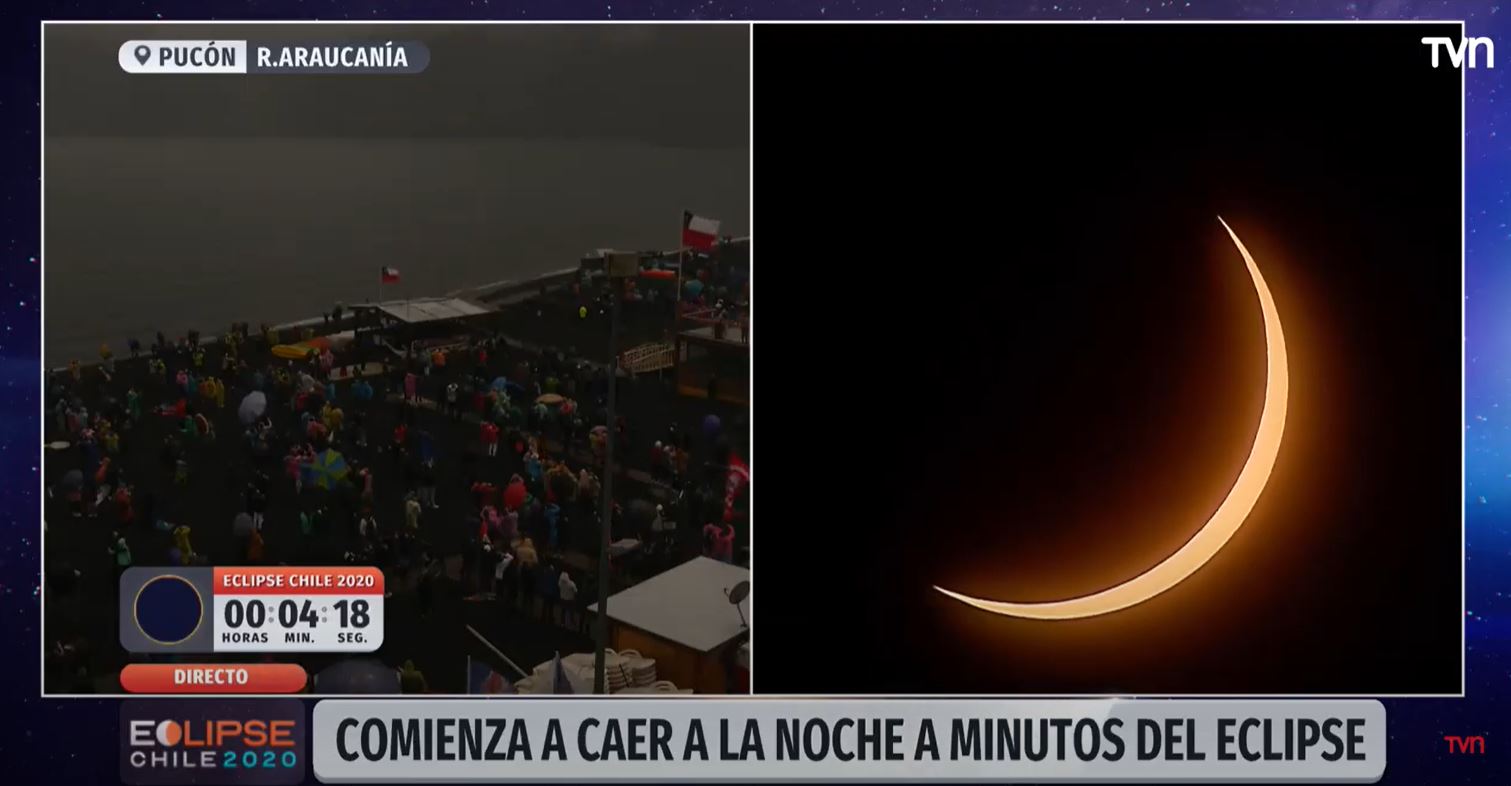Only total solar eclipse of 2020 thrills spectators in South America
Cloudy weather didn't dampen local enthusiasm for the total solar eclipse.
The only total solar eclipse of 2020 dazzled spectators in South America, and some lucked out even as overcast skies threatened to put a damper on an incredible celestial event.
The so-called Southern Cone has now been treated to two total solar eclipses in back-to-back years. But each event was unique. Both eclipses were visible in Chile and Argentina, but the 2019 total solar eclipse happened in the wintertime for the Southern Hemisphere and in the late afternoon. This meant that the sun was low on the horizon, so the sky didn't get as dark as it did this year.
Monday's (Dec. 14) eclipse happened during the Southern Hemisphere's summertime and closer to midday, so the sun was located higher in the sky. During a Spanish-language NASA interview, Daniela Fernandez from the Astrophysics Institute at the Pontifical Catholic University of Chile said that the facility had many tools ready to go to take advantage of its near-zenith (overhead) position in the sky this year. Unfortunately it was completely overcast at the university's astronomical observatory during the eclipse.
Video: Total solar eclipse 2020: See the moment of totality over Chile
Related: Total solar eclipse 2020: See the best photos and more from Twitter
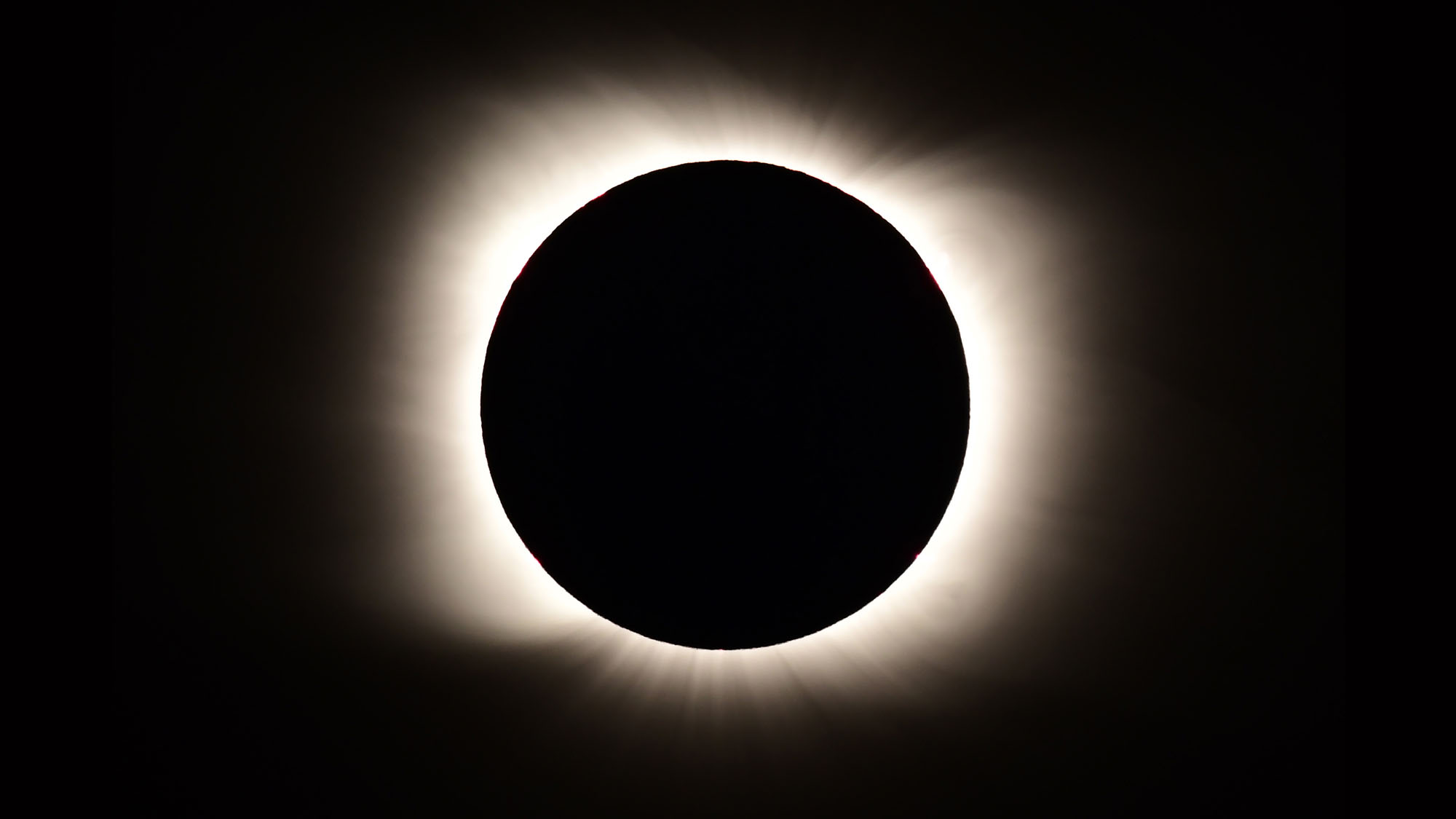
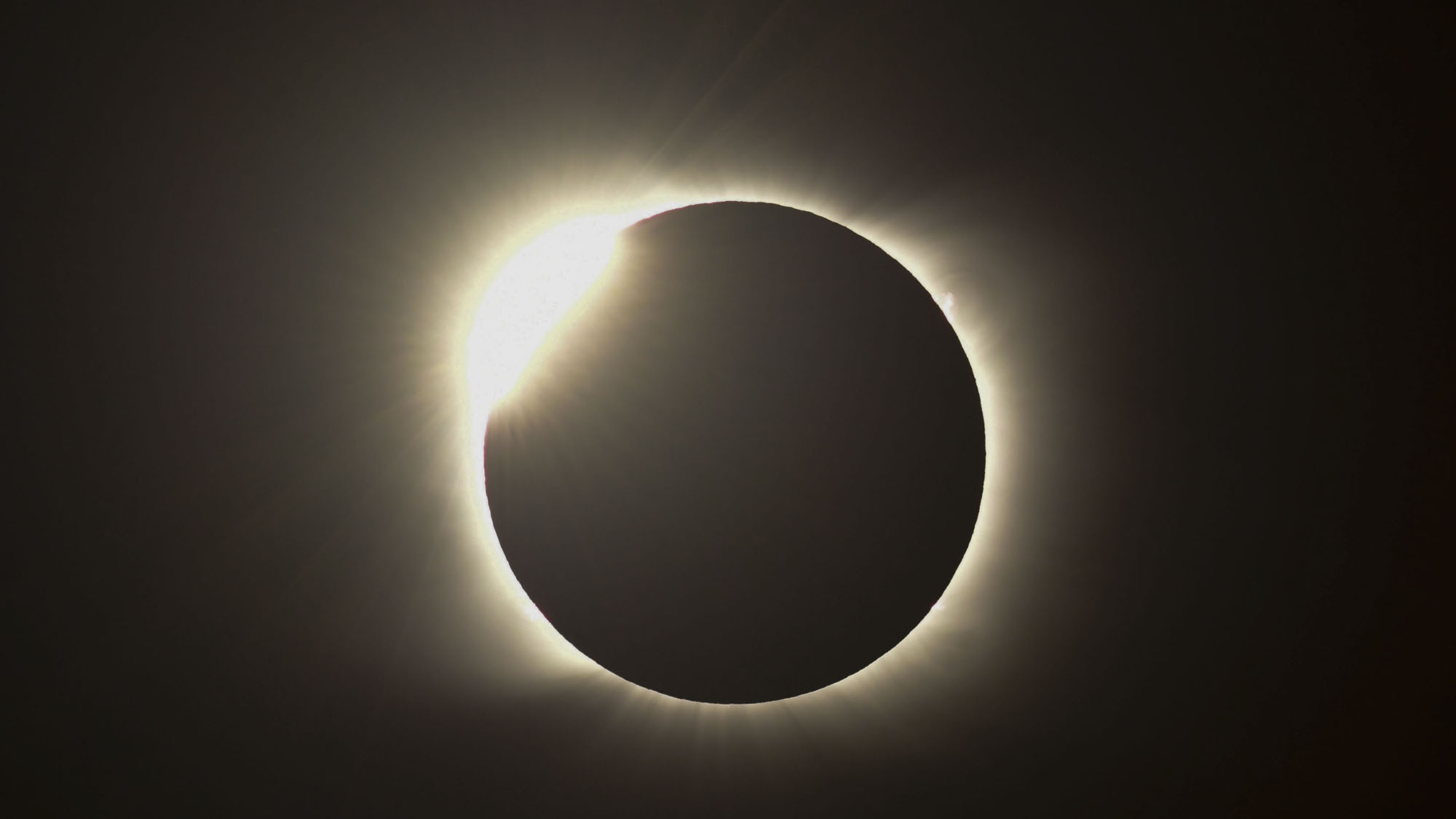
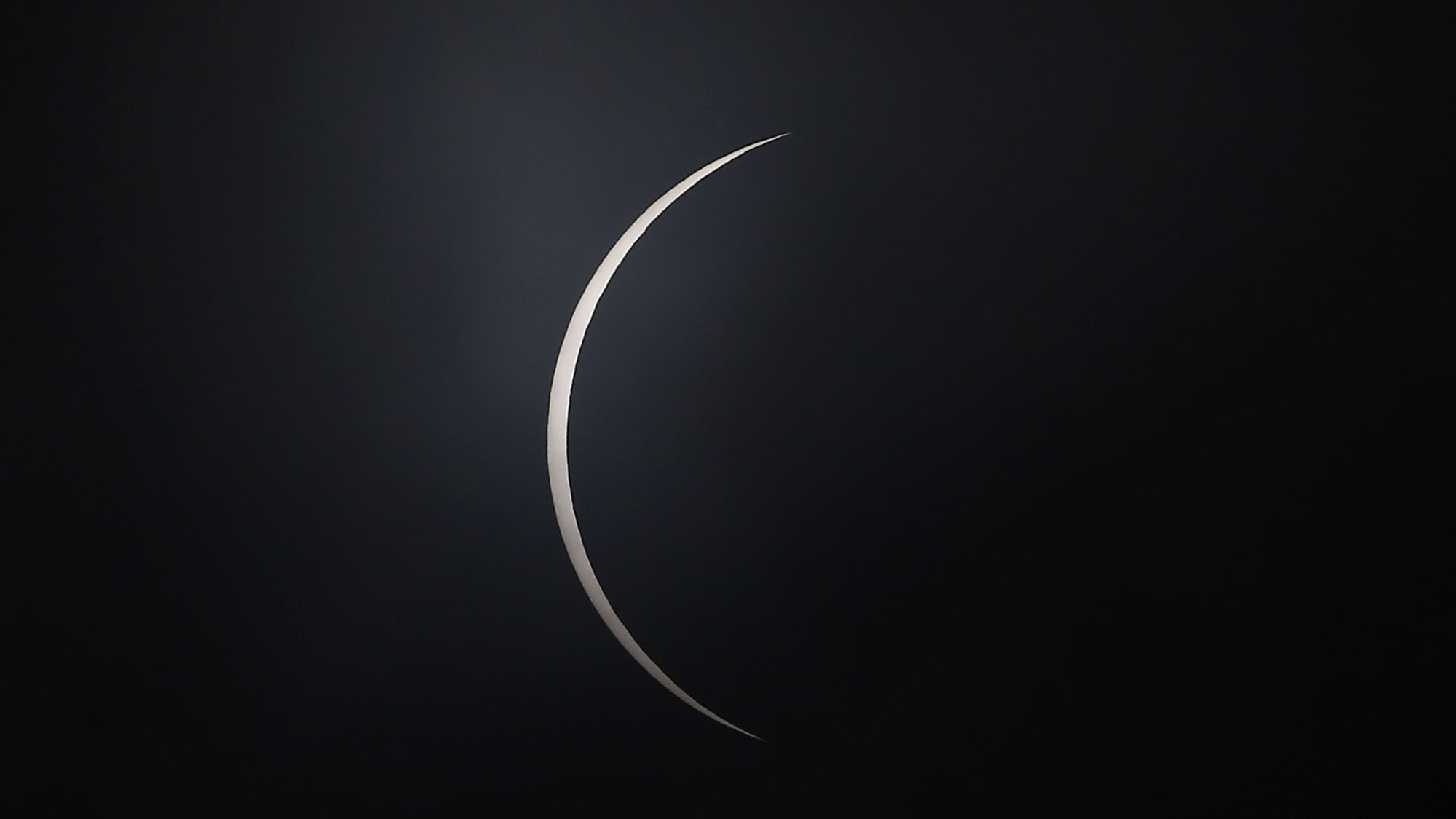
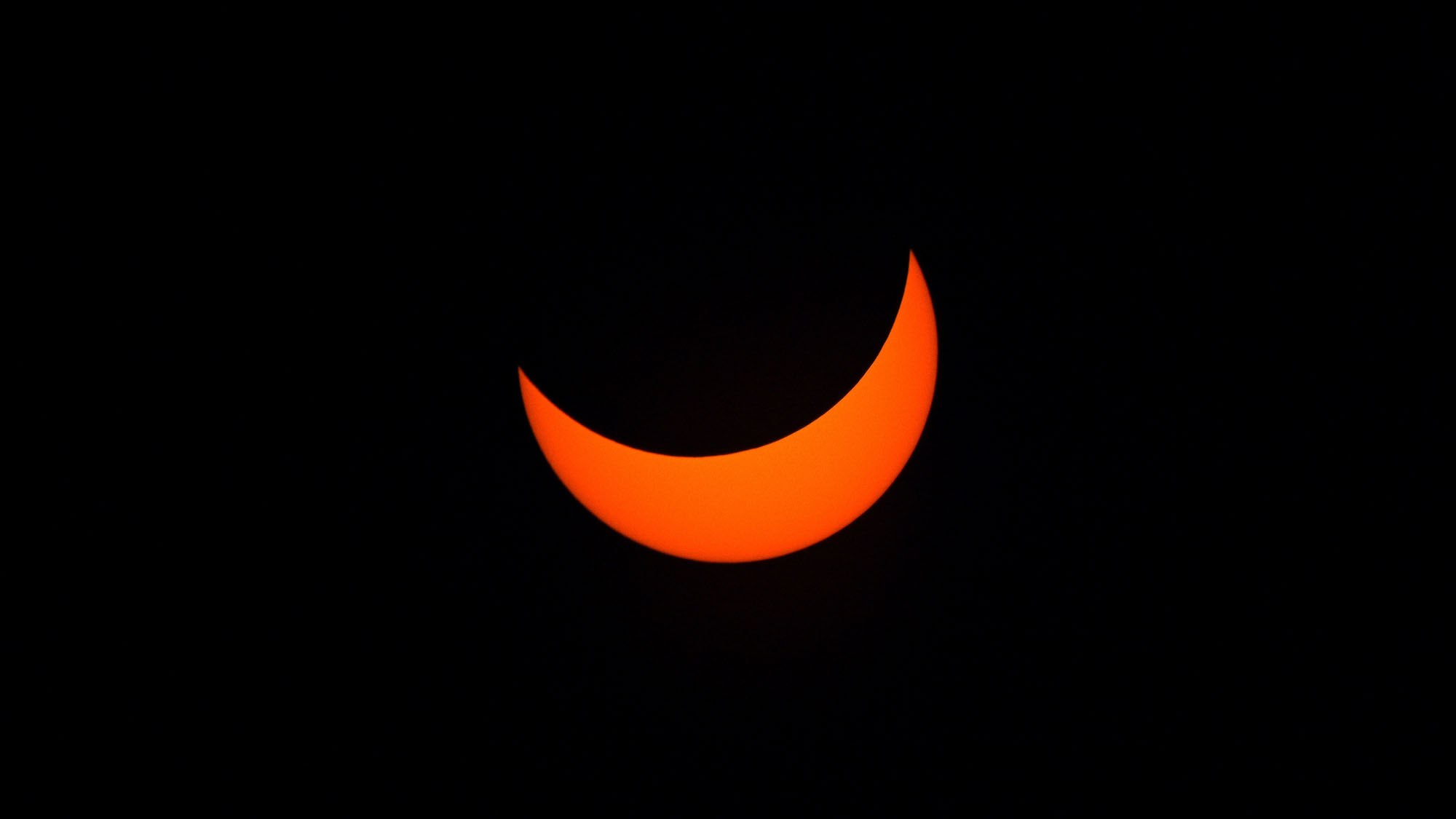
Other locations across Chile got better views of the total solar eclipse, and local enthusiasm didn't waver.
The partial eclipse, when the moon first appeared to take a "bite" out of the sun, made landfall in Chile at 11:38 a.m. local time (9:38 a.m. EST; 1438 GMT) on the country's western coast, according to TimeAndDate.com.
Spectators in Chile's Bío Bío, Araucanía and Los Ríos regions eagerly awaited the event, many prepped with face masks and solar-viewing glasses, and hoped for the best amid the fluctuating overcast conditions.
Get the Space.com Newsletter
Breaking space news, the latest updates on rocket launches, skywatching events and more!
Public broadcaster TVN Chile interviewed enthusiastic families and food vendors who had gathered within the path of totality.
Catching a total solar eclipse on Earth is the result of many things going right, and clouds can unfortunately throw a wrench in eclipse-viewing. It's sheer luck that Earth's moon is the right distance from our planet and the right size to be able to block out the entire disk of the sun, allowing the wispy, ultra-hot corona, or "crown" of the sun to peep through. A view of Martian solar eclipses reveals that total solar eclipses are not a regularly occurring phenomenon in the solar system.
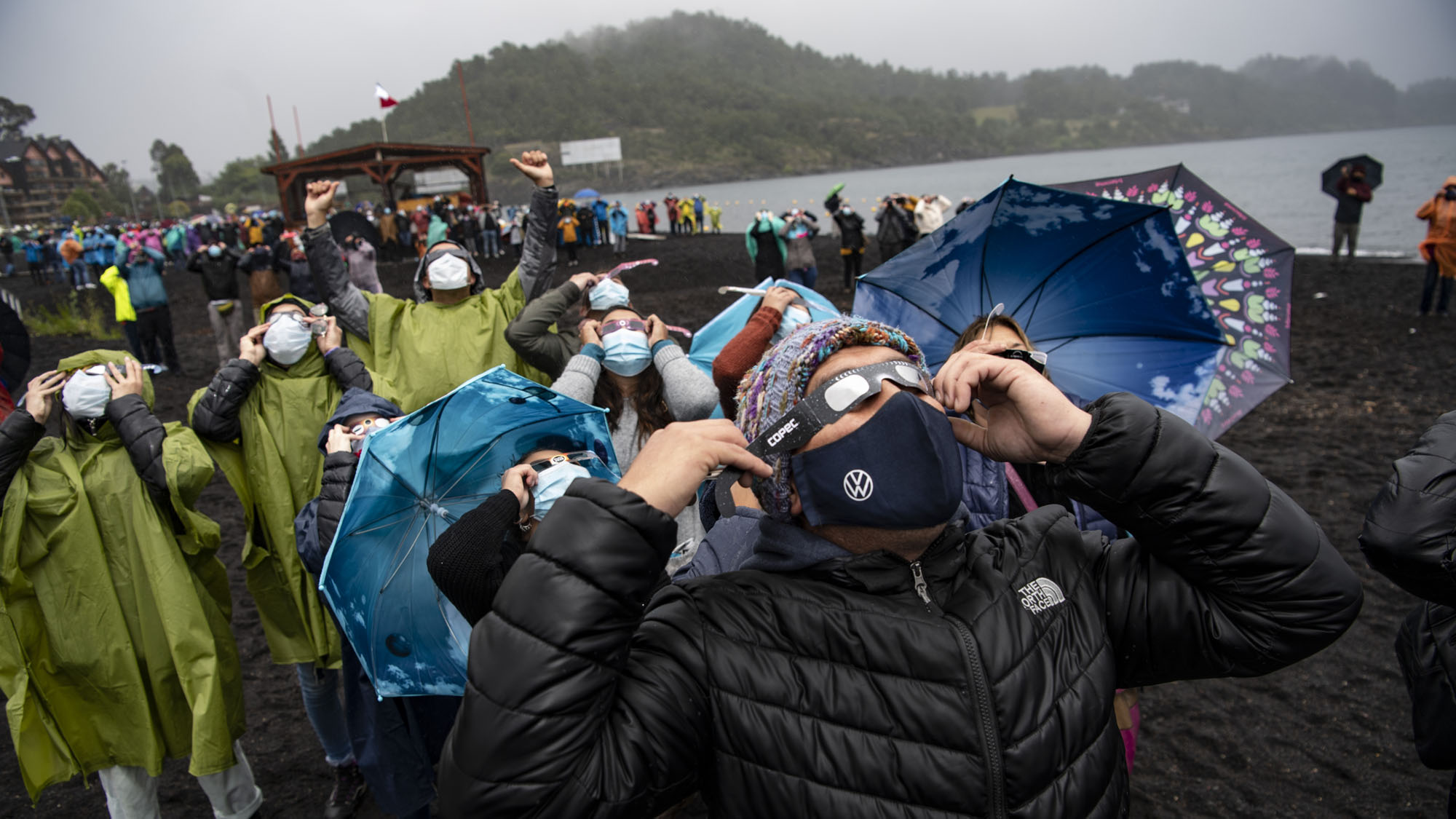
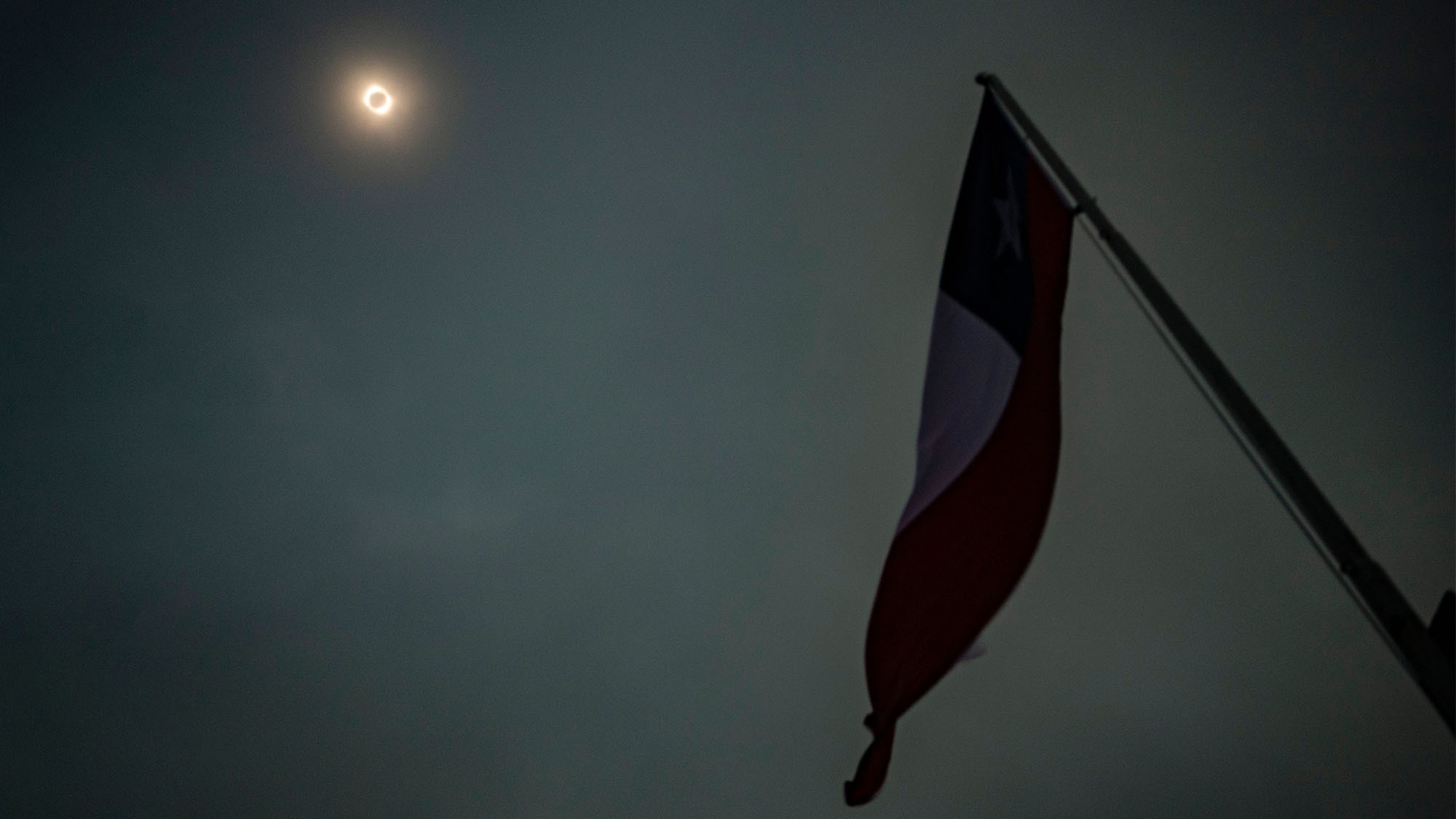
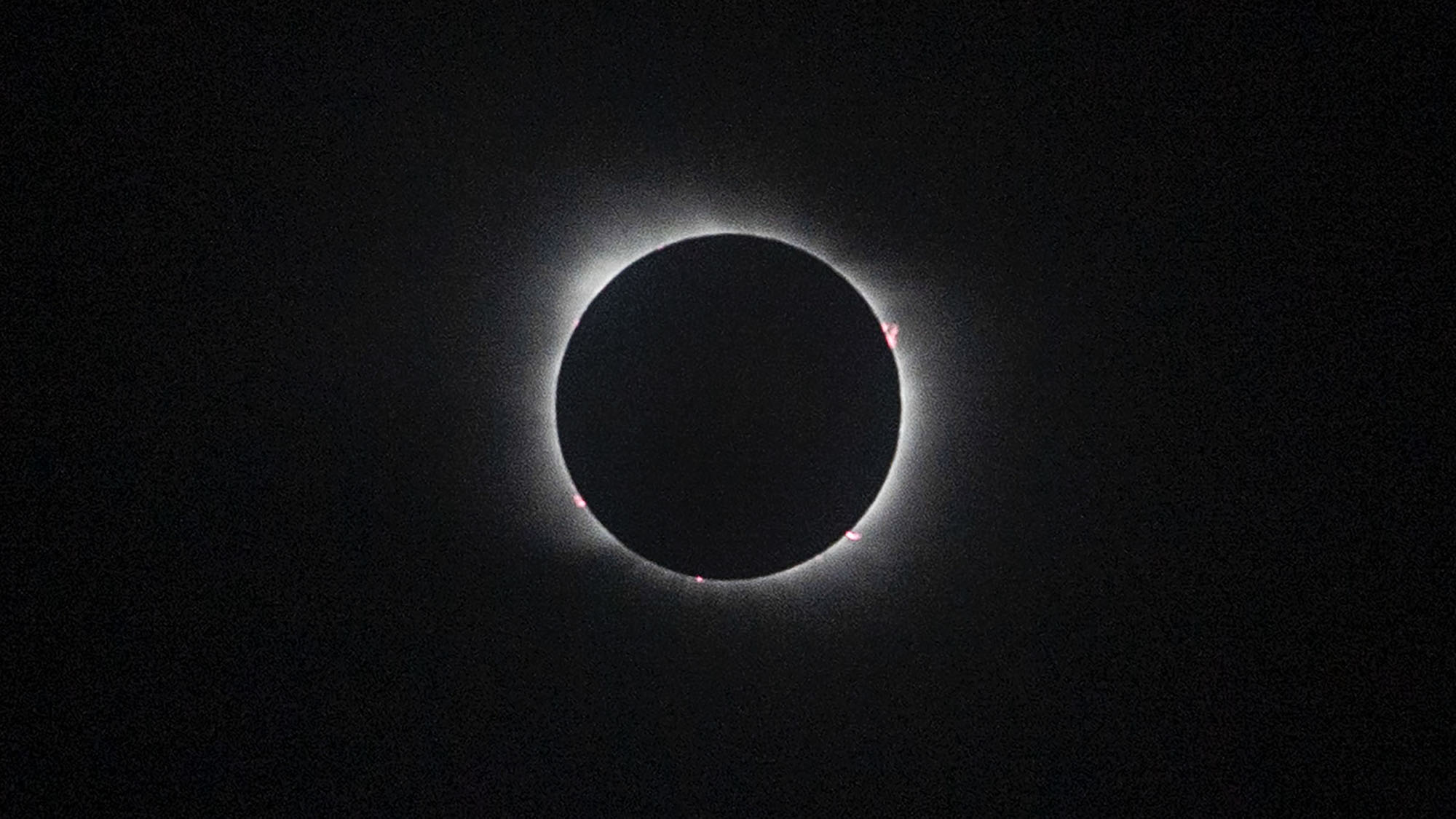
Viewers in Pucón, in Chile's Araucanía region, received about 2 minutes of totality, which began at 1:03 p.m. local time (11:03 a.m. EST; 1603 GMT). TVN Chile aired live footage of the Pucón crowd cheering when daylight began to dim minutes before totality. Although the sky remained overcast, the coronal ring of the total eclipse was visible.
In Southern Argentina, crowds had fewer clouds blocking their view of the eclipse at Balneario el Cóndor in the Río Negro region. Viewers there experienced 1 minute and 48 seconds of totality, according to TimeAndDate.com.
Today's total #SolarEclipse was the only total solar #eclipse of the year. Although it was mainly visible from Earth in parts of South America, #GOESEast had a perfect view of the moon's shadow moving across the Earth. pic.twitter.com/AlU0E8eGsWDecember 14, 2020
The total solar eclipse allowed viewers to spot about five solar prominences, or solar eruptions, on the surface of the sun. The moon was able to block out enough of the sun's light that these solar blazes could be seen along the rim of the lunar disk. Footage from slightly-cloudy locations also gave the view an oscillating quality that added to the mesmerizing nature of the event.
The solar eclipse was also viewed from space. The GOES East satellite run by the National Oceanic and Atmospheric Administration (NOAA) captured a view of the moon's shadow sweeping across the Southern Hemisphere.
The partial solar eclipse in the South America concluded east of Salina de Eje, Argentina, at 2:51 p.m. local time (12:51 p.m. EST, 1751 GMT).
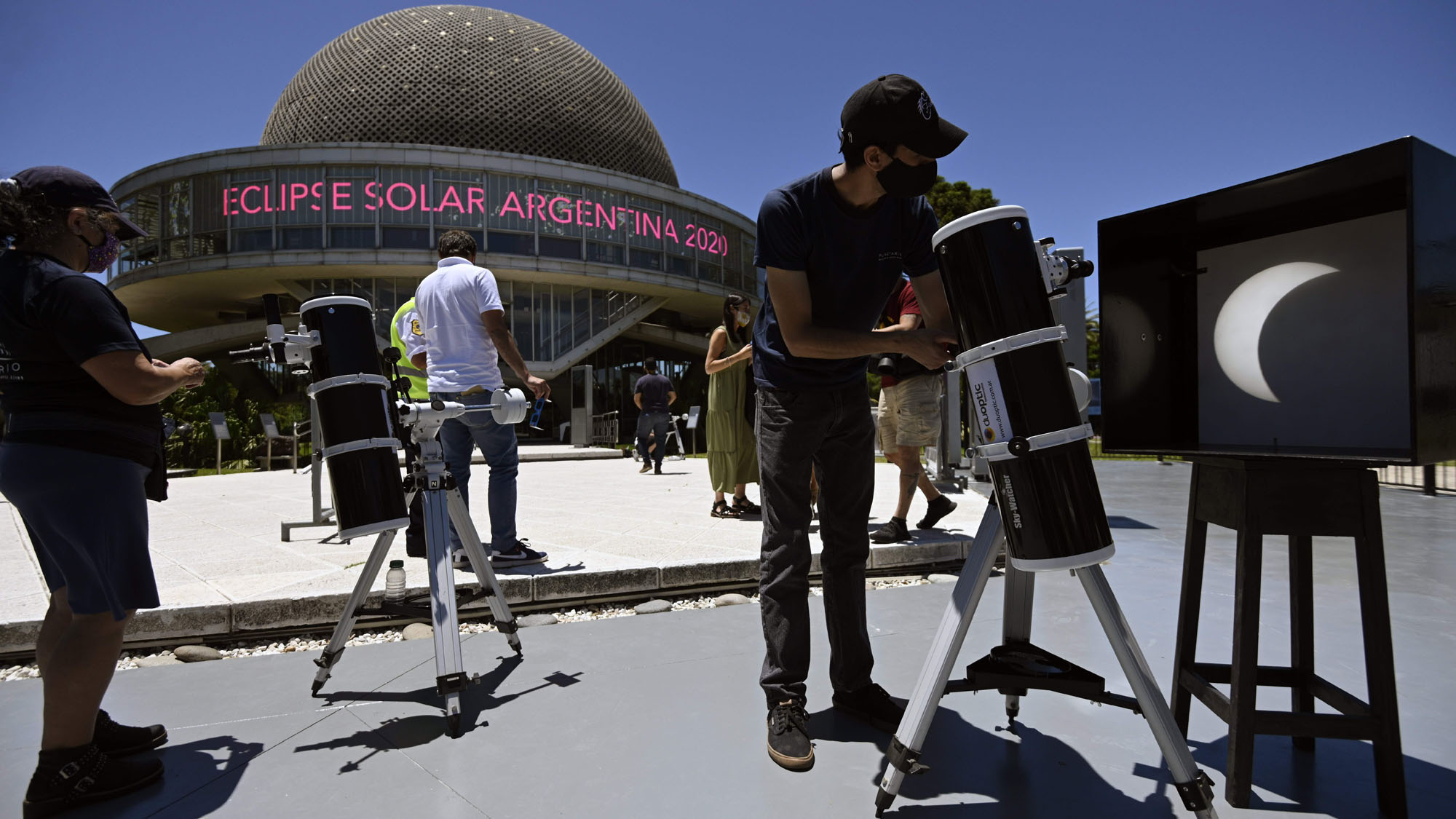
The next total solar eclipse will happen over the Antarctic peninsula on Dec. 4, 2021. An annular, or "ring of fire" solar eclipse will be visible from North America, Europe and Asia on June 10, 2021. The next time a solar eclipse will cross South America's Southern Cone will during be an annular eclipse on Oct. 2, 2024.
Follow Doris Elin Urrutia on Twitter @salazar_elin. Follow us on Twitter @Spacedotcom and on Facebook.
Join our Space Forums to keep talking space on the latest missions, night sky and more! And if you have a news tip, correction or comment, let us know at: community@space.com.

Doris is a science journalist and Space.com contributor. She received a B.A. in Sociology and Communications at Fordham University in New York City. Her first work was published in collaboration with London Mining Network, where her love of science writing was born. Her passion for astronomy started as a kid when she helped her sister build a model solar system in the Bronx. She got her first shot at astronomy writing as a Space.com editorial intern and continues to write about all things cosmic for the website. Doris has also written about microscopic plant life for Scientific American’s website and about whale calls for their print magazine. She has also written about ancient humans for Inverse, with stories ranging from how to recreate Pompeii’s cuisine to how to map the Polynesian expansion through genomics. She currently shares her home with two rabbits. Follow her on twitter at @salazar_elin.
